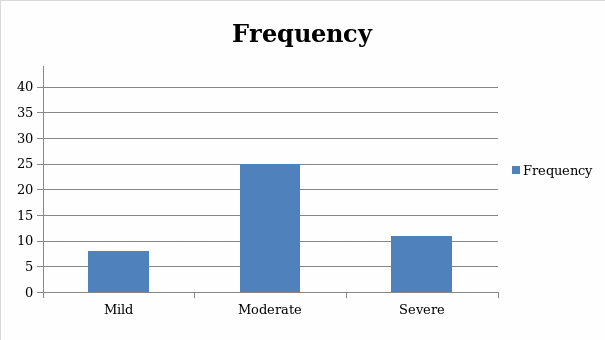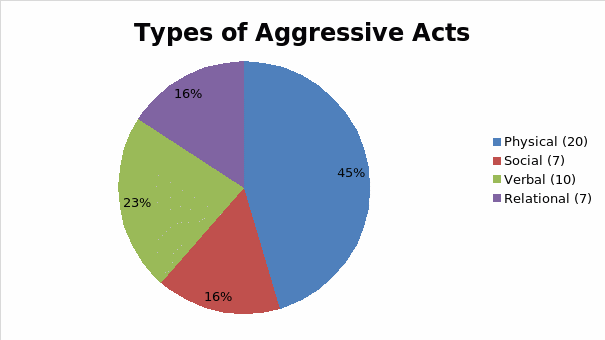Introduction
Aggression among children is one of the central concerns of modern society. Despite numerous attempts to reduce its levels, there is credible evidence of the gradual deterioration of the situation (LoBue, 2018). That is why there are multiple research works focused on the investigation of this issue. For instance, Gentile, Mathieson, and Crick (2011) state that media violence can be considered one of the primary causes for manifestations of physical aggression. In the study focused on the examination of relations between media violence exposure and physical and relational aggression, they find out a direct correlation between these issues, which evidences the negative effect violent media might have on children (Gentile et al., 2011). These findings can be supported by another research conducted by Gentile, Coyne, & Walsh (2011), who state that childrens consumption of media violence during their first school years results in verbally aggressive behaviors, higher relationally and physically aggressive behavior, and deteriorates their prosocial skills. Additionally, Fikkers, Piotrowski, Weeda, Vossen, and Valkenburg (2013) are sure that negative social contexts can make the impact of violent media even stronger and introduce double-dose effects.
For this reason, the in-depth investigation of aggressive behaviors in children and the role media plays in it acquire the top priority. To conduct a comprehensive analysis of this issue, operational definitions of central terms should be introduced. Thus, violent television can be defined as the frequency and severity of violent acts or behaviors appearing in media or specific media content. Another critical term is childrens programming that can be determined as a set of TV series, shows, cartoons, or movies designed and marketed to children and broadcasted during specific periods when children are awake and can see them (usually in mornings and afternoons).
Regarding the fact that the given paper delves into the media violence and its impact on childrens behavior and aggression, the following hypothesis can be formulated:
The existing childrens programming contains numerous violent acts that can trigger the emergence and evolution of inappropriate behavioral patterns and higher aggression levels.
The following research question is posed: Does modern childrens programming contain violent media content that can have adverse effects on children?
Methodology
To prove the hypothesis and answer the research question, the following methodology was introduced. First of all, a time when children would normally watch TV was chosen. The study was conducted on Sunday, in time periods from 8 a.m. to 11 a.m. and from 7 p.m. to 9 p.m. These are selected because the majority of TV channels consider their appropriate time for childrens programming and demonstrate content designed for kids. Additionally, TV schedules were investigated to choose the most appropriate content and time. The event sample approach was utilized to collect data about the number of violent acts and behaviors demonstrated in cartoons, TV shows, movies, and other media content. During the 5 hours of observations, all cases of violence or aggressive behaviors had been noted. Diverse cartoons and series such as Sponge Bob Square Pants, Kung Fu Panda, iCarly, Teen Mutant Ninja Turtles, and The Penguins of Madagascar were watched.
The character of inappropriate actions was described to assess them in accordance with a specific coding scheme designed for this investigation. It consisted of three basic elements, which are the frequency of violent acts, their severity, and type. The total number of violent acts observed during the 5 hours was recorded using the event sample method. It provides an opportunity to count every single violent act and calculate the total frequency. As for the severity, a specific scale consisting of 3 points was created: mild (pushing, touching, insulting), moderate (kicking, hitting), and severe (threats, the use of a weapon, suicidal motifs, severe injuries). The scale was needed to classify all inappropriate behaviors and evaluate them. Finally, all violent acts discovered during the observation were characterized as physical, social, relational, verbal (Strasburger, Jordan, & Donnerstein, 2012). The given methodology was applied to all findings with the primary aim to determine the character of the content presented in media and either prove or refute the hypothesis suggested above.
Results
The 5-hour observation and analysis of the media content designed for children provided the following results. The total number of violent acts is 44. There is no significant difference between the content broadcasted in the first and second halves of the day (from 8 a.m. to 11 a.m. and from 7 p.m. to 9 p.m).
The mean level of severity can be determined as a moderate one (25 moderate violent acts). Almost all characters of movies, cartoons, or TV shows used physical actions such as kicking or hitting to impact each other.
In such a way, the following graph representing the frequency and severity of violent acts can be built:

One can see that moderate violent acts hold a leading position.
As for the types of aggressive or inappropriate behaviors observed while watching children programming 20 physical, 7 social, 10 verbal, and 7 relational acts were noted.
The following diagram representing the distribution of violent acts types and their frequency can be created:

In such a way, in the course of the investigation, the data describing the observed media content was collected. The total number of noted acts is 44, with the prevalence of moderate violent behaviors, including kicking, hitting, and the use of other physical forms of impact. Additionally, the distribution of aggressive behaviors does not vary regarding different periods of time. About 8,8 violent behaviors per hour were observed in the morning and evening. As for their types, again, no significant differences at different periods of time were discovered. The physical violent acts are prevalent (20 of 44). The verbal type comes next (10), social and relational have similar showings (7).
Altogether, the given findings can be used to cogitate about the nature of modern media and the character of the content it provides. During the investigation, the answer to the research question was also acquired. The existing children’s programming obviously contains media content that might have adverse effects on children. At the same time, information collected during the observation also proves the hypothesis about the promotion of higher aggression levels in children under the impact of violent content that can easily be found in the childrens programming. Finally, in the course of the study, the prevalence of the physical type of violent acts was discovered. It becomes a threatening factor that might precondition the further deterioration of the situation regarding childrens responses to aggressive content.
Conclusion
Summarizing the findings acquired in the course of the research, the presence of numerous violent scenes and actions should be admitted. Multiple shows and cartoons designed especially for children demonstrate inappropriate behaviors and violent content that might have a pernicious impact on childrens behavior. For this reason, the existence of a particular problem in this sphere should be noted.
Additionally, the findings correlated with other researchers investigating the issue. The previous papers delving into the high levels of aggression in children admit a pernicious impact TV and media have on their prosocial habits and relations with peers (Gentile et al., 2011). Investigators also note that the prevalence of physical types of violent acts might trigger the development of particular subtypes of aggression in adolescents (Kail & Barnfield, 2014). In such a way, the given study proves the idea that modern media provides violent content that can impact adolescents.
However, there were several aspects limiting the research. First, a 5-hour observation is not enough to assess all media content presented by childrens programming. Second, the inability to correlate reported violent acts with alterations in adolescents behavior is another significant barrier to the enhanced results. In such a way, the future research will be focused on the investigation of how particular content broadcasted regarding childrens programming impacts their behavior both in a long and short-term perspective. Finally, the acquired findings demonstrate the dangerous character of all media content regardless of its nature and target audience. For this reason, all parents can be recommended to control the access to TV and monitor the quality of the content provided to their children.
References
Fikkers, K., Piotrowski, J., Weeda, W., Vossen, H., & Valkenburg, P. (2013). Double dose: High family conflict enhances the effect of media violence exposure on adolescents’ aggression. Societies, 3(3), 280-292. Web.
Gentile, D., Coyne, S., & Walsh, D. (2011). Media violence, physical aggression, and relational aggression in school age children: A short-term longitudinal study. Aggressive Behavior, 37, 193-206.
Gentile, D., Mathieson, L. & Crick, N. (2011). Media violence associations with the form and function of aggression among elementary school children. Social Development, 20(2), 213 – 232. Web.
Kail, R. & Barnfield, A. (2014). Children and development (3rd ed.). Toronto, Canada: Pearson.
LoBue, V. (2018). Violent media and aggressive behavior in children [Blog post]. Web.
Strasburger, V. C., Jordan, A. B., & Donnerstein E. (2012). Children, adolescents, and the media: Health effects. Pediatric Clinics of North America, 59(3), 533-587. Web.